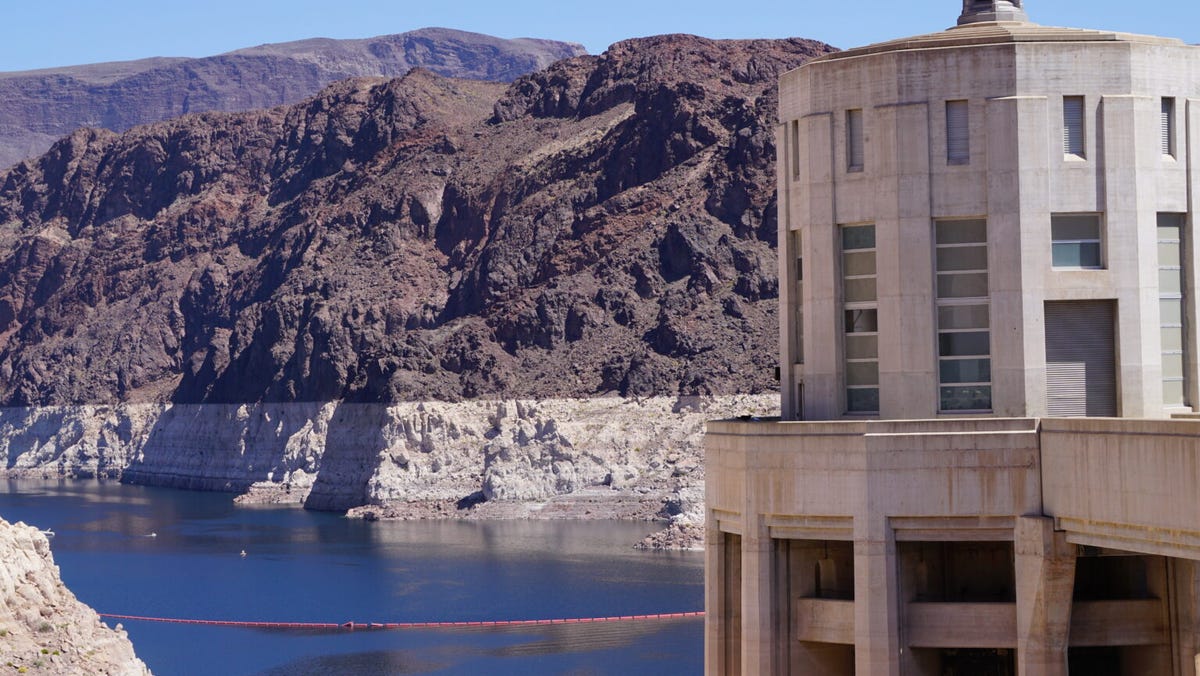Uncommon Knowledge
Newsweek is committed to challenging conventional wisdom and finding connections in the search for common ground.

WELLS, Nev. (KOLO) -Two Southern Californians died April 6 when their vehicle crashed with a tractor-trailer about 25 miles south of Wells in northeastern Nevada.
Rueben Rojas, 70, was the driver of the 2017 Toyota Tacoma pickup that crashed with the 2016 Freightliner on U.S. 93. Maria Rojas, 66, was a passenger in the Toyota. Both were from Murrieta, Calif.
The Nevada State Police said the Toyota was going south in Elko County when it crossed the yellow line on U.S. 93 and into the path of the Freightliner at about 10:30 a.m. The tractor-trailer driver tried to avoid the Toyota but they crashed head-on and came to rest on the dirt shoulder.
The Toyota passengers died at the scene. The case remains under investigation. Anyone with information is asked to call at 775-753- 1111 or e-mail ncemirt@dps.state.nv.us
The Nevada Highway Patrol Northern Command East has investigated six fatal crashes resulting in seven deaths in 2024.
Copyright 2024 KOLO. All rights reserved.


A Pennsylvania man was convicted in the 2019 kidnapping and death of a woman whom he lured into traveling with him to Southern Nevada and later tied her to a signpost, taped her mouth and nose and watched her die from asphyxiation.
John Matthew Chapman, 44, was found guilty by a jury Wednesday in U.S. District Court in Las Vegas of one count of kidnapping resulting in death. He is set to be sentenced on Aug. 24, according to the U.S. attorney’s office.
Chapman faces a maximum sentence of life in prison, prosecutors stated in a news release.
Based on court documents and evidence presented during Chapman’s eight-day trial, on Nov. 14, 2019, police in Bethel Park, Pennsylvania, conducted a welfare check on the victim at the request of a friend, according to prosecutors.
The friend had not seen the victim for about two months but had observed a man they believed to be her boyfriend, Chapman, entering and leaving the victim’s home, prosecutors said.
While searching the victim’s residence, “officers found identification cards with Chapman’s name and photograph, the victim’s cellular telephone, multiple zip ties, and a roll of duct tape,” prosecutors said in the release.
Detectives arrested Chapman the following day, and during an interview, he admitted to driving the victim from Bethel Park to Las Vegas and misleading her into believing the trip was a vacation and that they might buy a residence in Las Vegas, according to prosecutors.
“Chapman, however, had planned to kill the victim before their departure to Nevada,” prosecutors stated in the release.
Chapman admitted to investigators that he drove the victim to the desert in Lincoln County and under the pretext of a bondage photo shoot, bound the victim’s hands and feet with plastic zip ties and tied her to a signpost.
“Then he applied duct tape to her mouth and nose and watched her die from asphyxiation,” prosecutors stated.
The joint investigation, involving the FBI in Las Vegas, the Lincoln County Sheriff’s Office and Bethel Park police, found that Chapman had returned to Pennsylvania and posed as the victim, including using her Facebook messenger account, living in her residence and using her money after her death, they said.
Contact Jeff Burbank at jburbank@reviewjournal.com or 702-383-0382. Follow him @JeffBurbank2 on X.

Nevada’s senators joined federal lawmakers from six other Western states Monday to demand additional funding to address the region’s long-term drought, worsened by climate change.
The Colorado River remains in an unfolding and worsening crisis. Water demand on the river far exceeds supply, meaning less water is available to refill the river’s large reservoirs, Lake Mead and Lake Powell. Such a scenario could risk water supply and hydro power to millions of Westerners.
Congress has moved to address the historic drought in the West by funding Colorado River management and conservation efforts, according to Nevada Current. In 2022, Congress passed the Inflation Reduction Act, which provided $4 billion for projects that mitigate drought in the 17 Western states served by the Department of the Interior’s Bureau of Reclamation.
However, that funding is only available through 2026.
Portions of that funding have been used to compensate farmers and ranchers for water conservation in the lower basin after Nevada, California, and Arizona agreed to collectively reduce water use by at least 3 million acre-feet through the end of 2026, when the Colorado River’s current operating guidelines are set to expire.
In a letter Monday, Nevada’s Democratic Sens. Catherine Cortez Masto and Jacky Rosen, and Reps. Dina Titus and Susie Lee, urged U.S. Department of Agriculture Secretary Tom Vilsack to “bring all resources to bear in helping address long-term drought and aridification in the Western United States.”
“Drought remains a severe risk for American farmers and ranchers and threatens farmland and local economies that rely on dwindling water resources,” wrote the lawmakers.
More than 30 lawmakers signed on to the letter, including several from Colorado, Oregon, New Mexico, Montana, Arizona, California.
According to the U.S. Drought Monitor, at the end of March, 23% of the West was in drought. Areas of Arizona, New Mexico, and western Montana are experiencing extreme and exceptional drought this spring. In the Pacific Northwest and northern Rockies, dry conditions have persisted, with record low snowpack in some areas, raising concerns about worsening drought conditions.
In western Montana, snowpack is well below normal and at record low levels for some areas. While minor drought improvements were made throughout much of the West, worsening drought conditions are expected heading into the summer, according to the National Oceanic and Atmospheric Administration.
Lawmakers acknowledged the Biden-Harris Administration’s recent steps to increase the number of agriculture conservation practices eligible for Inflation Reduction Act dollars, but emphasized that more comprehensive funding across the West is needed. In the letter, lawmakers called for further investments in upstream, watershed-scale projects, water forecasting, water conservation, and watershed restoration.
Upper basin “watershed-scale investments greatly benefit all downstream uses, in particular for our farming and ranching communities,” reads the letter.
The letter noted that funding for large-scale agricultural conservation in lower basin states has greatly helped address the drought, but that “smaller scale on-farm measures and larger-scale upstream watershed restoration and improvements” are also needed to address both short-term drought recovery and future resilience.
In the West, U.S. Forest Service lands comprise 19% of the total land area and contribute 46% of the surface water supply, meaning that more investments in public national forest lands would have a significant impact on downstream surface water flows, according to the letter.
Specifically, lawmakers called on the White House to provide additional funding for Natural Resources Conservation Service programs related to water forecasting, water conservation, and watershed restoration. Lawmakers also requested funding for measures that upgrade water infrastructure, build soil health, and contribute significant ecosystem benefits.
“Reliable and sustainable water availability is absolutely critical to any agricultural commodity production in the American West, and swiftly deploying funds to producers and watersheds in our States and Districts is crucial to help them respond to more frequent and severe droughts,” lawmakers wrote.

Nevadans are fed up with people moving into the state, and experts spoke with Newsweek about why this is.
In a new survey from Rasmussen Reports and NumbersUSA, 40 percent of the state’s residents said they wanted the population to grow much more slowly. And a whopping 51 percent said the government should make it more difficult for people, including those from California, to move into their state.
The negative sentiment for those moving into the state comes as the state has experienced a record triple population growth over the past 40 years, and only 13 percent of the state’s population are on board with the state continuing to grow rapidly, the report found.
A relatively small percentage, 20 percent, said they wanted Nevada’s population to stay about the same, and 22 percent said they wanted it smaller.
Part of the concerns over the population growth come down to Nevada’s limited water supply. As America’s driest state, cities routinely compete with each other to get water in their town, and a higher population could threaten the already dwindling supply.
The influx of Californians also drives up home prices, which can leave native Nevadans without much of a housing market to sift through, according to real estate agent Alisha Penn of Keller Williams.
“Many Nevadans desire slower population growth to maintain the state’s unique culture and preserve its resources,” Penn told Newsweek. “The influx of people, particularly from California, impacts housing availability, driving up prices and straining infrastructure. If Nevada continues to grow rapidly, it may face challenges in maintaining quality of life, managing congestion, and ensuring sustainable development.”
Californians moving into Nevada typically bring in a significant income or cash reserves and can quickly snatch up the higher price real estate local Nevadans can’t.
“The significant underbuilding in Nevada has created a mismatch between supply and demand, and the increased demand from new residents has led to even higher prices, making it difficult for locals to find affordable housing,” Nick Giulioni, the CEO of Off Leash Investments, told Newsweek.
Rapid population growth also strains the existing infrastructure and public services, contributing to traffic and higher wait times for healthcare.
“If Nevada continues to grow rapidly without addressing these challenges, we could see rising tensions between long-term residents and newcomers,” Giulioni said. “Policymakers may need to balance the benefits of attracting new residents with the need to maintain a livable environment for those already living in Nevada.”
On a broader scale, local Nevadans might also be noticing a shift in values as more newcomers arrive.
“When people move in large numbers from regions with distinct socio-economic backgrounds, such as Californians to Nevada, the local populace might feel a dilution or loss of their cultural and community identity, which adds to the resistance,” Howard Hao Li, a Florida licensed attorney, told Newsweek.
Newsweek is committed to challenging conventional wisdom and finding connections in the search for common ground.
Newsweek is committed to challenging conventional wisdom and finding connections in the search for common ground.


Video: Dozens of Yale Students Arrested as Campus Protests Spread


Larry Webb’s deathbed confession solves 2000 cold case murder of Susan and Natasha Carter, 10, whose remains were found hours after he died


Haiti Prime Minister Ariel Henry resigns, transitional council takes power


US secretly sent long-range ATACMS weapons to Ukraine


First cargo ship passes through new channel since Baltimore bridge collapse


Turkey’s Erdogan meets Iraq PM for talks on water, security and trade


Spanish PM Pedro Sanchez suspends public duties to 'reflect'


American Airlines passenger alleges discrimination over use of first-class restroom